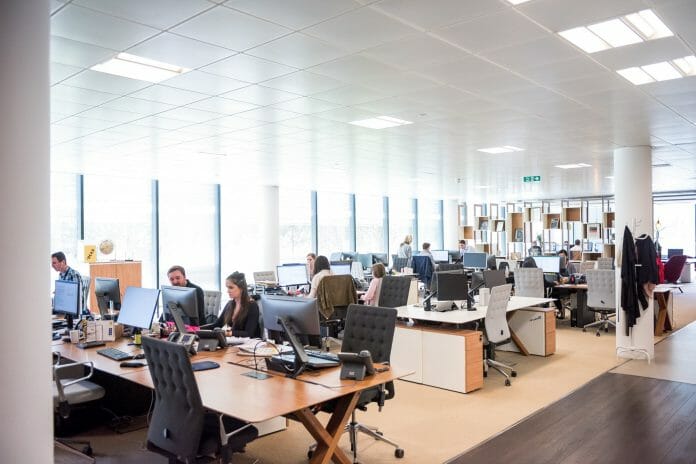The pandemic has forced the adoption of new ways of working. Organisations must reimagine their work and the role of offices in creating safe, productive, and enjoyable jobs and lives for employees.
By Hans Weemaes
Changing Times, Changing attitudes
Before the pandemic, the conventional wisdom was that attractive offices were critical to productivity, culture, and attracting and retaining talent. Companies competed for prime office space, and concepts as densification, open-office designs, hoteling, and co-working were mode of operation.
But a survey1 conducted by KPMG during the Movement Control order (MCO) revealed that 69% of Malaysians want the work from home (WFH) arrangements to continue after the MCO period.
During the pandemic, many have been surprised by how quickly and effectively technologies for videoconferencing and other forms of digital collaboration were adopted. For many, the results have been better than imagined. Despite the eagerness to keep this working arrangement, as many as 64% admit to facing challenges affecting their productivity and willingness to work from home.
At the moment, companies are managing in varied ways. Some have given employees permission to continue working remotely until at least 2021. Others have recalled staff to the workplace on different schedules and in staggered groups. Still others are leaving it entirely up to individual workers to decide where to base themselves.
Companies are looking to the post-Covid future. For many, the vision is a hybrid model that combines remote work and office time. According to Nicholas Bloom, a Stanford University economics professor, states that once the pandemic subsides, working from home two days a week will be optimal for balancing collaborative and quiet work, while benefitting from the reduced stress of less commuting.
Here are four suggestions that can be implemented to ensure that the office time allows for workers remain healthy so they can find the right balance between structure and sociability, and independence and flexibility
1) Improve wellbeing to boost productivity: Research carried out by Gallup in 2017 linked wellness with high levels of employee satisfaction, and a 21% rise in productivity. Factors such as thermal comfort, air quality and good acoustics are key – data suggests there is a 66% drop in productivity when people are exposed to disruptive noise.
You can promote wellness in the office by encouraging people to use the stairs rather than the lift, , for example, with art on the walls of the stairwells. Aside from encouraging different fitness activities, simply improving the ways that people interact can aid wellness. There is a wealth of research on how well-being is impacted and buildings standards such as WELL, and FITWEL are a providing a holistic set of actionable measures benchmarks.
2) Leverage practices from other industries: Even before the emergence of Covid-19, more hospitals were starting to use ultraviolet-C (UV-C) light to disinfect surgical suites and other rooms and surfaces because it kills or inactivates microorganisms. Some offices are now looking into installing UV-C lighting in their air-handling units to remove airborne bacteria, viruses and germs to improve the indoor air quality. Over time, organic materials usually build up on the surfaces of the units’ cooling coils and other components, degrading their energy efficiency and leading to higher energy use and costs. Having UV-C lights in the units also prevents this and lessens the need for maintenance
3) Keep it Simple: You don’t need to have one workstation per person anymore, and there is the opportunity for space efficiencies, leading to significant cost saving. This can then be re-invested in more agile ways of working, such as home-working. Business requirements also have a much shorter time span these days, often of two or three years, and real estate strategies need to accommodate this. Future proofing is not just about using the latest technology, it’s about having an architecture proposition that gets the basics right and allows flexibility.
4) Reduce spread of viruses: Public health officials agree that one of the ways to prevent the indoor spread of any contagious respiratory virus is to increase the volume of outside air into our offices. The simple act of opening a window can meaningfully dilute the concentration of infectious particles in the air. Frequent hand-washing is another good way to mitigate disease transmission. But in many office buildings, the only sinks are inside bathrooms, which tend to be out of the way. By introducing self-contained hand-washing stations and hand sanitizer dispensers in high-traffic areas, we can improve safety and sustainability.
Now is the time
As employers around the world experiment with bringing their employees back to offices, the leadership must act now to ensure that when they return, workplaces are both productive and safe.
Organisations must also use this moment to break from the inertia of the past by dispensing with suboptimal old habits and systems. A well-planned return to offices can use this moment to reinvent their role and create a better experience for talent, improve collaboration and productivity, and reduce costs. That kind of change will require transformational thinking grounded in facts.
Ultimately, the aim of this re-imagination fo the workplace is what good companies have always wanted: a safe environment where people can enjoy their work, collaborate with their colleagues, and achieve the objectives of their organisations.
Hans Weemaes is part of GreenRE’s Technical Panel









